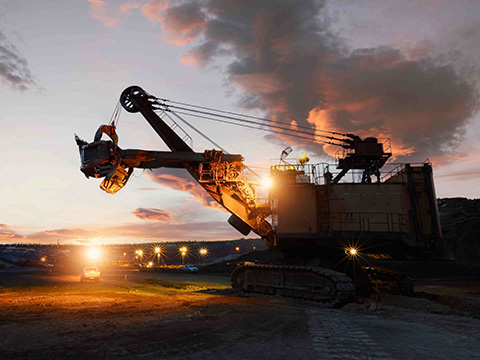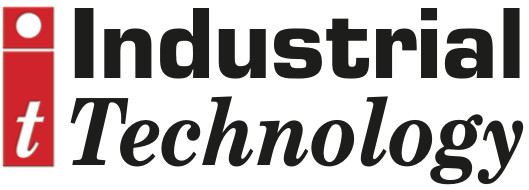
Posted to News on 8th Jul 2025, 10:30
Bringing legacy DC motors into the digital age
In heavy industry, DC motors installed decades ago still deliver reliable performance. But in the face of increasing digitalisation, the challenge isn't whether the motors can keep going - it's whether their supporting infrastructure can keep up. Here, Andrea Verzaglia, product manager, and Umberto Del Grande, head of product marketing department at WEG, explore how new approaches to drive control are enabling legacy equipment to thrive in the Industry 4.0 era.

(See WEG at FoodManufacturing.Live, 15 October 2025, on stand 56)
In sectors such as metals, plastics, mining and paper, DC motors remain a mainstay in critical operations. Their high torque at low speeds and capability for four-quadrant operation make them particularly suited to demanding applications like rolling mills, extruders, cranes and winders. Many of these motors have been operating reliably for decades and show no signs of mechanical fatigue.
The challenge lies not in the motors themselves, but in the control systems that support them. Older drives, often based on legacy platforms, are increasingly incompatible with the demands of today's connected, data-driven industrial landscape. Their limitations in connectivity, diagnostics and compliance make them a bottleneck in otherwise robust systems.
Modern demands, outdated infrastructure
As digital transformation accelerates, the expectations placed on motor control systems have evolved. Today's industrial environments require drives that can integrate seamlessly into wider automation networks. Real-time data exchange with PLCs, compatibility with Ethernet-based protocols and built-in safety solutions have become essential to meet the demands of modern automation.
Unfortunately, many existing drive systems simply aren't built for this. The absence of industrial networking options like PROFINET or EtherNet/IP can prevent legacy systems from participating in plant-wide automation set ups. The commissioning process itself is often time-consuming, involving manual parameter entry or outdated tools that lack modern diagnostic feedback. In some cases, even achieving basic functionality like remote access or firmware updates becomes a complex task.
As industrial processes become more demanding, ensuring high efficiency and compliance with modern standards is increasingly critical.
Harmonic distortion - particularly in high-load systems - can introduce serious inefficiencies, lead to equipment degradation and increase the risk of penalties from utility providers. And when it comes to safety, many drives still lack integrated functions that are now essential in applications involving human-machine interaction or vertical motion, such as safe torque off and safe brake control.
Rethinking retrofit strategies
One approach is to replace the entire system, including the motor. But this is often impractical. DC motors are typically embedded into larger machine systems and play a critical role in production. Their removal would require not just mechanical intervention, but a complete re-engineering of associated processes, electrical supply and safety systems. The resulting downtime can be prohibitively expensive, especially in continuous or high-throughput environments.
A more strategic alternative is to modernise only what is necessary - typically the drive. By upgrading the drive while maintaining the motor and mechanical layout, operators can achieve many of the benefits of a new installation without the cost or disruption of full replacement. This approach also preserves the value of legacy investments, while positioning the system to meet today's performance and compliance standards.
The arrival of modern retrofit-ready drives
In response to this need, the latest generation of DC drive technology has been developed specifically to address the shortcomings of legacy systems. These drives retain full compatibility with older equipment, allowing them to be installed in place of existing units without changing cabinet layouts or rewiring terminals.
Yet beneath the familiar exterior, these drives deliver a step change in functionality. They support multi-protocol Ethernet connectivity for seamless integration with modern PLCs. Commissioning is transformed by intuitive software environments that enable configuration via USB, Ethernet or Wi-Fi. Users can monitor system status in real time and easily copy drive settings across multiple devices. While firmware updates can be managed remotely within a local network, some level of physical access is still needed for firmware updates.
These platforms are also designed with energy performance in mind. In high-power applications, optional twelve-pulse configurations can be used to significantly reduce harmonic distortion. This not only improves energy efficiency, but also contributes to longer equipment life and more stable grid performance.
Most importantly, these modern drives incorporate safety features directly into their control architecture. Functions such as safe torque off and safe brake control - essential in cranes, hoists and other vertical motion applications - are handled natively within the drive. This eliminates the need for external hardware, simplifies design and helps ensure compliance with machine safety standards.
Modernisation without replacement
One example of this retrofit-ready approach is the TPD500 from WEG. Developed as the successor to the widely used TPD32-EV, the TPD500 is a next-generation AC/DC converter, also referred to as a DC drive. It's designed to control DC motors - especially in industrial applications where high torque, low speed and long-term reliability are critical. The TPD500 provides a direct drop-in replacement with identical footprint and wiring layout. This makes it ideal for revamp projects where preserving the existing cabinet and motor is critical.
The TPD500 introduces a modern digital control platform that includes native support for protocols such as Modbus TCP. Its smart keypad and user-friendly software tools significantly reduce commissioning time, while optional wireless connectivity allows for remote configuration and diagnostics - a clear benefit in large or hard-to-access installations.
Designed to support both two-quadrant and four-quadrant operation, the TPD500 is capable of managing heavy-duty loads with precision. For larger-scale applications, turnkey solutions are available up to 3,300 amps (A). Here, WEG supplies the complete system as its Frame E offering. Alternatively, WEG can provide only the control unit, which enables integration with and management of third-party armature power bridges - the power circuit that controls current flow to the armature, or the rotating part, of a DC motor - with current ratings of up to 20,000 A.
The AC/DC converter's design also prioritises energy performance. A twelve-pulse configuration, available later this year, will allow operators to minimise harmonic distortion in high-load systems, reducing electrical noise and improving grid stability.
In terms of safety, the TPD500's upcoming features will include Safe Torque Off and Safe Brake Control, essential for environments where vertical load handling or human-machine interaction is involved. These functions are integrated directly into the drive's architecture, supporting compliance with EN ISO 13849-1 and IEC 61800-5-2.
Extending the life and value of legacy systems
The introduction of drives like the TPD500 marks an important shift in how the industry approaches legacy equipment. Rather than viewing older assets as obstacles to digital transformation, they can be repositioned as the foundation of a modernised system - one that balances proven mechanical reliability with cutting-edge control and communication.
They might not "make them like they used to," but, as Industry 4.0 reshapes industrial operations, the ability to modernise without replacing core equipment will only become more valuable, scalable and future-ready.






